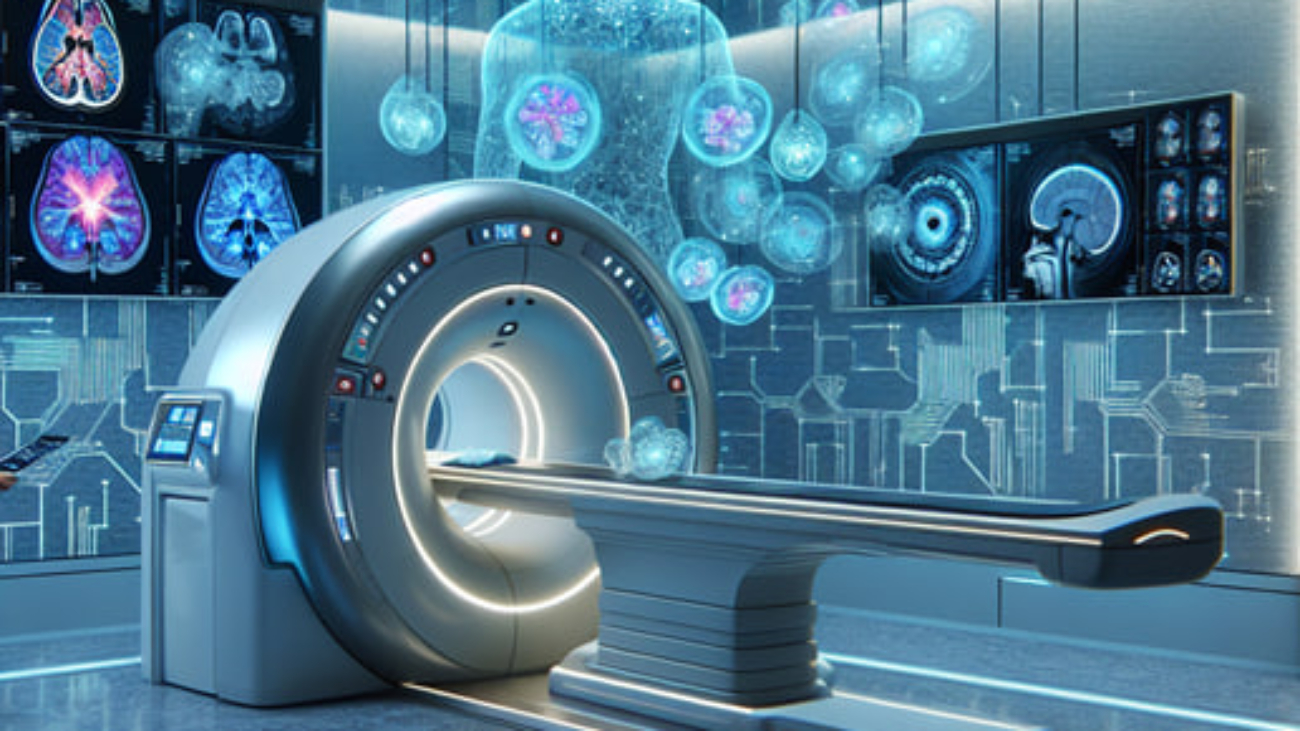The rapid advancement of artificial intelligence in radiology is transforming the healthcare landscape, offering unprecedented opportunities to enhance imaging efficiency while reducing costs. AI radiology systems, powered by sophisticated algorithms and convolutional neural networks, are revolutionizing diagnostic processes and workflow optimization. This technological leap has an impact on various aspects of medical imaging, from image acquisition and interpretation to treatment planning and patient care.
AI in healthcare, particularly in the field of radiology, is addressing critical challenges faced by healthcare providers and patients alike. These innovative solutions are improving diagnostic accuracy, streamlining reporting processes, and enabling personalized imaging protocols. Furthermore, AI-powered tools are helping to alleviate radiologist shortages, boost productivity, and cut down on unnecessary procedures. As the integration of artificial intelligence in radiology continues to evolve, it promises to reshape the future of medical imaging, making it more accessible, efficient, and cost-effective for healthcare systems worldwide.
In this article, we demonstrate how Imaging-Tech and artificial intelligence in radiology increases efficiency and productivity by reducing patient costs.
Cost Reduction Through AI-Powered Workflow Optimization

AI radiology systems have a significant impact on workflow optimization, leading to substantial cost reductions. These systems streamline processes, enhance efficiency, and minimize resource wastage. By automating tedious tasks, AI allows radiologists to focus on complex cases, improving overall productivity.
Automated Image Analysis
AI algorithms excel at image interpretation, often matching or surpassing human radiologists in detecting abnormalities. These systems can enhance image quality, reduce noise, and perform quantitative analysis, aiding visual interpretation. The integration of AI with existing PACS and RIS is crucial for seamless adoption in clinical settings.
Prioritizing Critical Cases
AI-driven software can prioritize and route urgent cases to radiologists, reducing diagnosis time for critical conditions. This smart workload distribution optimizes resources and ensures timely attention to high-priority cases, potentially saving lives and reducing healthcare costs.
Reducing Repetitive Tasks
AI automates repetitive tasks such as lesion scoring, motion artifact correction, and anatomical structure isolation. This automation not only increases efficiency but also reduces fatigue-induced errors, leading to more consistent and accurate reporting. By handling routine tasks, AI allows radiologists to dedicate more time to challenging interpretations and patient care.
Enhancing Diagnostic Accuracy with AI
AI radiology systems have a significant impact on improving diagnostic accuracy. These systems excel at recognizing complex patterns in imaging data, providing quantitative assessments in an automated fashion. This leads to more accurate and reproducible radiology assessments when AI is integrated into the clinical workflow.
Improved Lesion Detection
AI-based identification of contrast-enhancing lesions on brain MRI has shown promising results, approaching human reader performance. In some areas of radiology, there may be up to a 30% miss rate and an equally high false positive rate. AI algorithms can help address this issue by detecting lesions that might be overlooked by human readers, particularly those that are infratentorial, small, or at low contrast.
More Precise Measurements
AI systems can provide automated measurements, such as calculating volumes for each region of a brain tumor. This allows for more sensitive assessments of patient responses to treatment. AI-powered tools can also perform volumetric measurements of tumors classified as ‘nonmeasurable’ according to traditional criteria, enabling precise comparisons at each control visit.
AI-Assisted Treatment Planning and Monitoring
AI radiology systems have a significant impact on treatment planning and monitoring, enhancing the efficiency and accuracy of patient care. These systems excel at automating complex tasks, providing quantitative assessments, and offering predictive insights.
Automated Segmentation for Radiation Therapy
AI algorithms for automated volumetric segmentation of tumor burden have shown high accuracy, with spatial overlap agreement exceeding 90% for contrast-enhancing tumors and nonenhancing T2/FLAIR signal abnormalities. This automation improves the reproducibility and agreement of tumor response assessments compared to standard criteria, particularly beneficial for slow-growing tumors like lower-grade gliomas.
Quantitative Assessment of Treatment Response
Quantitative evaluation of SPECT-CT data has the potential to become the first choice for patient follow-up and treatment response evaluation. Its objectivity and expression of uptake changes in absolute units make it particularly valuable for research purposes. This approach provides a more precise and reliable method to assess changes in radiotracer uptake of target lesions compared to qualitative assessments.
Predictive Analytics for Patient Outcomes
AI-powered predictive analytics are being developed to identify high-risk conditions and patients most likely to respond to treatment protocols. For instance, Google is collaborating with health delivery networks to build prediction models from big data to warn clinicians of conditions such as sepsis and heart failure. These tools have the potential to significantly enhance decision support for clinicians in diagnosing and treating patients.
Improving Radiologist Efficiency with AI Tools
AI radiology systems have a significant impact on enhancing radiologist efficiency, addressing the growing workload demands in the field. These systems excel at automating complex tasks, providing quantitative assessments, and offering predictive insights.
Worklist Prioritization
AI algorithms enable smart workload distribution, prioritizing urgent cases for immediate attention. This optimization ensures critical conditions receive timely diagnosis, potentially saving lives and reducing healthcare costs.
Automated Measurements and Quantification
AI-powered tools excel at quantifying radiographic characteristics, crucial for disease detection, characterization, and monitoring. These automated measurements provide more precise and reliable assessments compared to traditional methods.
AI-Powered Image Interpretation Assistance
Deep learning methods in image interpretation often match or surpass human performance. These systems can enhance image quality, reduce noise, and perform quantitative analysis, complementing radiologists’ expertise and improving overall diagnostic accuracy.
Addressing Radiologist Shortages with AI
AI radiology systems have a significant impact on addressing workforce shortages in the field. These systems excel at automating complex tasks, enhancing efficiency, and supporting radiologists in their daily work.
Triage and Preliminary Reads
AI algorithms enable smart workload distribution, prioritizing urgent cases for immediate review. This optimization ensures critical conditions receive timely diagnosis, potentially saving lives and reducing healthcare costs. AI-powered tools can swiftly sort and prioritize radiological studies like CT scans and MRIs based on urgency, highlighting severe conditions such as stroke, hemorrhage, and malignancy.
Remote Diagnosis Support
AI supports remote patient monitoring, a popular approach to managing chronic illnesses. Clinical-grade wearables and sensors with AI components transmit and consolidate data for easy interpretation. This technology allows physicians to reference and alter care plans remotely, reducing the burden on healthcare providers while maintaining quality patient care.
AI-Assisted Training for New Radiologists
AI-related training programs are being integrated into radiology curricula. The European Society of Radiology and the Society for Imaging Informatics in Medicine offer courses on AI applications in medical imaging. These programs aim to equip radiologists with the knowledge and skills to effectively use AI tools in their practice, addressing the growing demand for AI-literate professionals in the field.
Conclusion
The integration of AI in radiology is causing a revolution in healthcare, bringing about significant improvements in imaging efficiency and cost reduction. These cutting-edge systems have a profound influence on various aspects of medical imaging, from streamlining workflows and enhancing diagnostic accuracy to personalizing imaging protocols and addressing workforce shortages. By automating complex tasks and providing sophisticated analytical tools, AI enables radiologists to focus on more challenging cases, ultimately leading to better patient care and more effective resource allocation.
FAQs
- How does AI contribute to medical imaging?AI enhances medical imaging by streamlining the validation of patient information and imaging sequences. It ensures the accuracy of data against imaging protocols, detects any incomplete or missing images, and helps prevent the accidental transfer of protected health information within image data.
- What advantages does AI offer in terms of efficiency?AI significantly boosts efficiency by analyzing vast amounts of data to provide actionable insights, which facilitates rapid and informed decision-making. Additionally, AI’s predictive analytics can anticipate trends andoutcomes, supporting proactive strategies and reducing the likelihood of human error.


Add a Comment